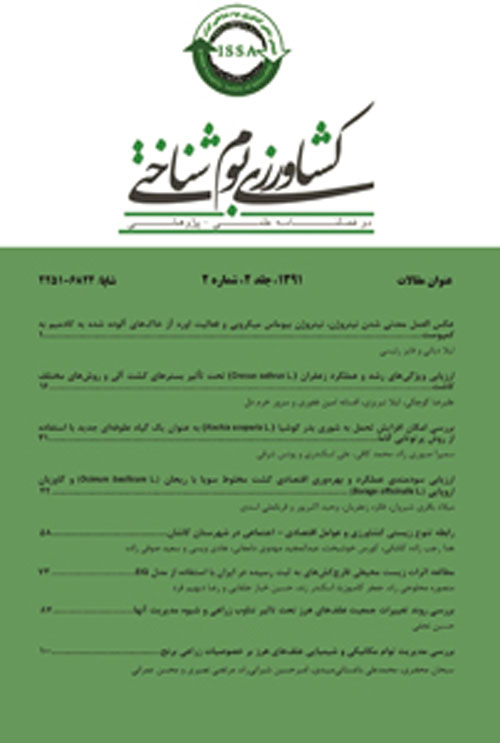Assessment of the food security status in Marvdasht county
Author(s):
Abstract:
Introduction
With almost 870 million people worldwide chronically undernourished in 2012, the number of hungry people in the world remains unacceptably high. Reducing food insecurity and achieving sustainable food security are within reach, if such holistic actions as the quantification of food security at the household level are taken. Food security is defined as the permanent access to sufficient, safe and nutritious food for all people, in order to have an active and healthy life. Improving food security is about more than just increasing the quantity of energy intake, it is also about improving the quality of the food The main objectives of the study were (i) to conduct a quantitative analysis of food security in Marvdasht county and (ii) to determine factors affecting sustainable food security in the study area. Materials And Methods
This study was performed in Marvdasht county, a county of Fars province in southwestern Iran. Accordingly, 500 rural and urban households were randomly selected from the study area and a descriptive-survey method was applied. Demographic, social and economic information was collected through general questionnaires and household food security was assessed by an 18-item Household food security questionnaire as recommended by USDA. The relation between parental education, household income and household size with household food insecurity status were determined by the Spearman correlation test. The state of household food insecurity in urban and rural areas as well as the relationship between household food insecurity and parental job(s), were determined using a chi-square test.Results And Discussion
According to the results obtained from USDA questionnaires, the most important experiences of food insecurity in households were a concern that food would run out and that they could not afford to eat balanced meals and relied on only a few kinds of low-cost foods. The results of this study showed that food insecurity in Marvdasht was 73.8% (Food insecure without hunger was 35%, Food insecure with moderate hunger was 23%, Food insecure with severe hunger was 15.8%). Food insecurity in rural households was greater than in urban households. One of the reasons is the lower economic ability of rural households compared with urban households for food supply. In addition, the higher rates of illiteracy and unemployment in rural areas can be other reasons. Also, food insecurity in villages located far from cities was not significantly different from those located close to cities, reflecting that there is no difference between an unpleasant diet for everybody and the distance from the city. Food insecurity reduced with increasing level of parental education and household income. Food insecurity in households with children was more than in childless households and, in households with an unemployed father and a housewife mother, was greater than in other households. Conclusion
Overall, the findings showed that food insecurity was largely related to social, economic and cultural factors. Poverty eradication and changing unsustainable and promoting sustainable patterns of consumption and production are vital for access to food security for all. Hence, development of appropriate programs for improving the socio- economic situation of households could reduce food insecurity in the study area. Keywords:
Language:
Persian
Published:
Journal of Agroecology, Volume:6 Issue: 1, 2016
Page:
1
https://magiran.com/p1586447


